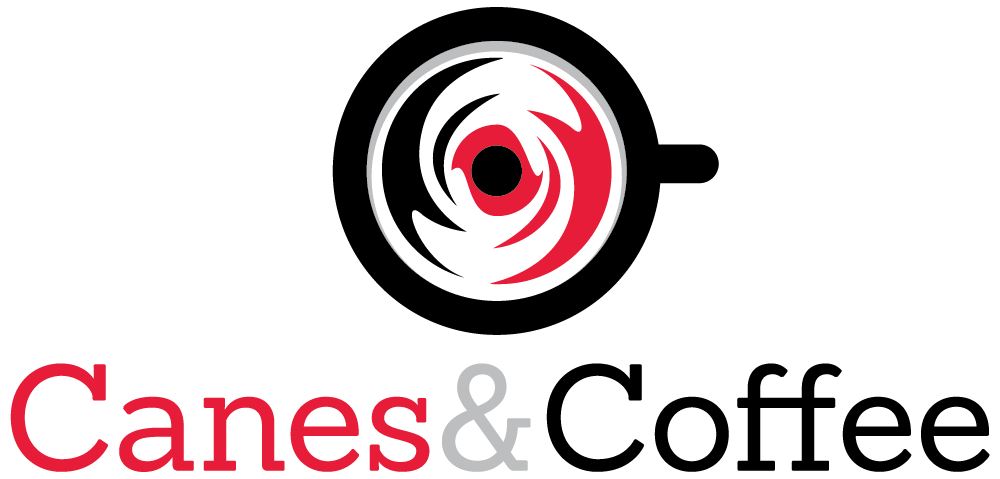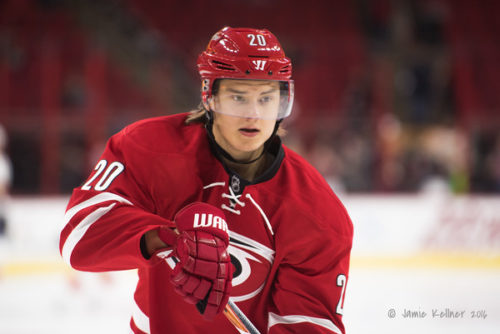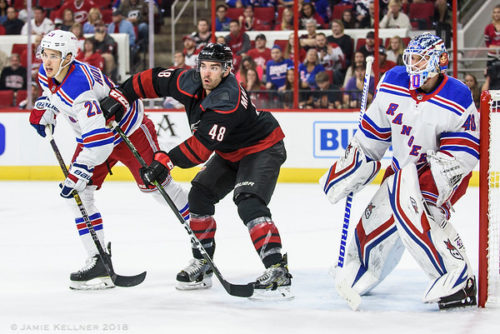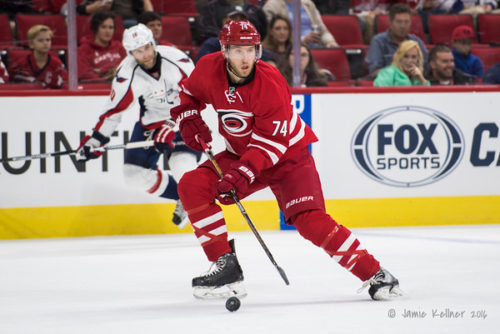Now four days into the NHL free agency period, the picture for teams’ rosters is gradually becoming clearer. In addition, the list of available options who could yield a difference-maker is gradually shrinking.
The past day and a half has seen high-end scoring forward Taylor Hall and top defenseman Alex Pietrangelo come off the board.
The goalie market has also shrunk considerably with Braden Holtby, Jacob Markstrom, Henrik Lundqvist, Cam Talbot, Anton Khudobin, Corey Crawford, Matt Murray and Thomas Greiss coming off the board.
As far as the Hurricanes go, the Pietrangelo deal and the goalie market in general could be relevant — IF the Hurricanes have an interest in Marc-Andre Fleury.
Seeking difference-makers
When a team reaches the point where it is in the top half of the NHL and likely even if not certain to make the playoffs, improving becomes more difficult. Whereas it could have been possibly to fairly easily upgrade 8-10 slots on the Hurricanes teams from 5-6 years ago, that is no longer the case anymore. And trying to improve via outside help becomes even more difficult with salary cap constraints.
2020 Tampa Bay Lightning
Some might argue that the 2020 Stanley Cup Champion Tampa Bay Lightning won the Cup by virtue of the talent that they have had in the lineup for multiple years now. No doubt that played a leading role in the championship. But after being de-pantsed by the Columbus Blue Jackets in four games in the 2019 NHL Playoffs, the Lightning a concerted effort to become tougher to play against in adding Patrick Maroon, Blake Coleman and Barclay Goodrow. Adding a trio of more rugged forwards to complement the high-end skill changed the makeup of the makeup of the Lightning forward group for playoff hockey.
2019 St. Louis Blues
Because of how important the position is and how rare true first line talents are, it is impossible to add a legitimate first line center via trade — except in an extremely rare situation when it isn’t. After three years of the ups and more so downs of the Buffalo Sabres, Ryan O’Reilly managed to grumble enough to win his way onto the trading block. The Blues were the team that looked past any imperfections and seized the opportunity to add a potential top-end center. O’Reilly went on to score nearly a point per game in the regular season and playoffs while also leading the way defensively. The Blues also found another difference-maker in the form of Jordan Binnington who seemed to come out of nowhere like he was shot out of a cannon in Cam Ward fashion. Just like with the Lightning a couple key difference-makers that changed the entire makeup of the team were an integral part of the Stanley Cup win.
2006 Carolina Hurricanes
Closer to home, the 2006 Stanley Cup-winning Hurricanes also had multiple additions play a prominent role in a ‘lightning in a bottle’ season. Outside additions Cory Stillman and Ray Whitney featured heavily in a boost offensively. And young guns Eric Staal and Cam Ward playing at an elite level ahead of schedule also helped change the complexion of the team.
On the one hand, there is no substitute for having a good team and a number of good hockey players in finding a formula for winning the Stanley Cup. On the other hand, having a good team and finding ways to make marginal improvement does not cut generally cut it. The big silver trophy is hoisted most years by a team that did start from having a good core but also found some element of lightning in a bottle that boosted them above some number of 8-12 other teams similarly good enough to win it all if the cards fall their way.
Seeking a 2020-21 difference-maker with the window open
The rare and improbable event that a top-end center becomes available
In my opinion, the Hurricanes have pushed their way up into the group that has a chance. Moderate improvement mostly means the difference in a few places or rounds of playoff wins, but finishing first out the group of 12 ‘good enough to win it all’ teams does not come from making some moderate four percent improvement from the previous year. Instead, it comes from either getting a bit luck (Binnington, Ward) or finding a true difference-maker or two that has the lightning in a bottle effect.
Though the chances are incredibly remote, Jack Eichel and Steven Stamkos’ names both took odd, even if very brief, turns in the trade rumors and rumblings before free agency kicked off. Bob McKenzie made a comment on Eichel but then very quickly moved to saying that the chances of him being available were virtually non-existent. I actually think the Taylor Hall move suggests that there might have been a bit more to the Eichel thing than initially thought. Remember that Eichel was there to see O’Reilly grumble his way out of town. Consider also that Eichel will be 24 years old when the 2020-21 season starts and into his sixth NHL season without playing in a single playoff game. Adding Taylor Hall would be a good short-term way to appease Eichel and at least try to make a statement that the team was pushing for the playoffs. With Tampa Bay again up against the salary cap ceiling in a hard way and having just won the Stanley Cup pretty much with Stamkos sidelined, is it possible that the Lightning would consider moving Stamkos who would obviously have value? That seems unlikely and there is a no-trade clause to be considered, but one should know never to never at this point.
I have the other top 6 center slot either behind or alongside Sebastian Aho pegged as the single biggest area for a sizable upgrade for the Hurricanes. Vincent Trocheck could very easily emerge to be capable or better in that role. I still think if he can develop to his ceiling that that is actually where Martin Necas ultimately belongs. But if a bona fide top-end scoring center improbably finds his way onto the trade market, the Hurricanes should move aggressively aiming to add a difference-maker at the level that could lead to a Stanley Cup.
Or….Marc-Andre Fleury?
(Note that I am addressing the complex financial and trade complexities to the side to be addressed later.)
Note that this group also included Henrik Lundqvist and Frederik Andersen for similar reasons. In addition, had I thought he could be available for short term and reasonable salary, I would also have included Braden Holtby.
I like this group very specifically for their potential ceiling/upside and the potential that one of them could yield the true difference-making improvement needed to win it all.
I am on record as saying that the Hurricanes do not need to upgrade in net and that it would not be a bad thing to head into the 2020-21 season with Petr Mrazek, James Reimer and Alex Nedeljkovic. And I even think one could make a decent argument that this duo is likely to be as good or better than the players named above. But here we are talking about averages, expected values or most likely outcomes. Hitting the highest expected average but with minimal potential for significant upside (variance) is yields another playoff berth and maybe moderately better playoff results, but does not likely yield the ‘lightning in a bottle’ upside that puts the Canes at the top of the heap.
I view Marc-Andre Fleury and the others as having the potential to be a true difference-maker. The surprising 2017-18 Vegas Golden Knights were a legitimately good hockey team across the board, but I still say that a rejuvenated Fleury was the fuel that made the engine go. That team ultimately came up short but did come within three wins of hoisting the Cup. Fleury is now a couple years older and has maybe faded a bit over the past couple years. But could he have one last second wind especially in a similar situation to the 2017-18 season. That 2017-18 season saw Fleury the odd man out in Pittsburgh with the expansion draft despite being part of the group that won the Cup there. After similarly being discarded in a similar way for Robin Lehner in Vegas, could Fleury be primed for one more monster season? That situation combined with his high-end ability puts his ceiling significantly higher than Mrazek or especially Reimer’s. And again, that ability to make sizable improvement is what intrigues me.
In math terms it is the difference between picking the highest expected value versus picking a wider variance with a greater potential for an outlier to the upside.
Hedged against possible downside
I already acknowledged that there was a legitimate argument to be made for Mrazek/Reimer projecting to be as good or better. And with Fleury’s trajectory currently headed downward even only if slightly, the potential exists that Fleury has just hit the way age-wise. But with Mrazek also in tow and Nedeljkovic somewhere in the mix, Fleury not working out would have minimal impact on the downside. He really only needs to be a capable backup to be serviceable even if a disappointment. And even in the worst case scenario that Fleury is not even at that level, Nedeljkovic offers another backup option. So that is a long-winded way of saying that the downside risk with Fleury is minimal since he really only needs to be a reasonably capable backup to hold the status quo.
The complexity of getting a deal done
Aside from whether the Hurricanes even have interest in Fleury like I do, getting something done is a fairly complex endeavor.
Fleury is due to be paid $7 million per year for the next two years. That does not fit into the Hurricanes salary cap situation in either year. And with the primary reason for Vegas to trade Fleury being salary cap relief, have Vegas each a sizable chunk of salary sort of defeats the whole purpose from their side.
To get a deal done takes a combined series of events:
A third party needs to be willing to step in to retain something close to the maximum 50 percent of Fleury’s salary with futures compensation in return.
Vegas must be willing to pay part or all of this compensation, and the Hurricanes might need to help too.
The Hurricanes likely need to find a trade for James Reimer that happens simultaneously. Despite the volume of goalies still available, Reimer’s strong 2019-20 campaign combined with his unique contract could make this doable. With Reimer’s bonus paid already for the 2020-21 season, his salary cap hit is $3.4 million but his actual out of pocket salary cost is only $850,000. If Arizona trades Darcy Kuemper to cut costs as has been rumored, the Coyotes could be a perfect destination. Arizona would need a competent backup as a team that is trying to shed some cost but also stay competitive. And their financial situation makes the low $850,000 actual cost very appealing.
I could see a deal being something like Vegas second Fleury and a second-round draft pick to a team like Detroit who is willing to serve as a middle man and retain $3.5 million of salary. Detroit sends Fleury at half the salary to the Hurricanes. And the Hurricanes send another second-round draft pick or comparable mid-tier prospect to Detroit and then maybe a late-round draft pick to Vegas. Vegas gets 100 percent relief on Fleury’s contract for the cost of only a single non-first round draft pick. The Hurricanes get Fleury for a non-first round and a later round draft pick importantly at a salary cap hit that almost exactly matches Reimer’s.
The result for the Hurricanes is a swap of Fleury for Reimer with only $100,000 added salary cap-wise. The Hurricanes also get a goalie under contract for the 2021 expansion draft. And most significantly, the Hurricanes get a player who comes with no guarantees at his age, but who I think has a significantly higher potential ceiling that Reimer and even Mrazek.
What say you Canes fans?
1) Do you agree with the basic premise that though the core of the team is a critical starting point that finding a ‘lightning in a bottle’ difference-maker is also a needed component for a Cup win? If so, do you think trying to find that with an off-season acquisition is possible?
2) What are your thoughts more specifically on Marc-Andre Fleury?
3) If not Fleury, do you think there is another goalie or other player who could be available who could be a true difference-maker?
Go Canes!




All moot on Fleury with the statement of him staying by the GM and the shipping out of Schmidt for a very cheap 3rd round pick 2 years out.
I think we’re apparently asking for too much to help some of these strapped teams to pick up a player of significance. I’m kind of ok with that as it would seem to indicate that Dundon is sincere in his desire to make sure Dougie and Svech stick around.
I still think we’d be able to do something with Vegas to send over Reimer and maybe McGinn and get Keumper. It really depends on if management wants Geekie with the big club or if keeping him in Chicago helps him be passed over for the Seattle draft. I’m not sure what DW may have cooked up for any other trades, but he’s very good at keeping things quiet and seems very patient when he needs to be. I’m thinking maybe in early November when there’s some idea if 1 Jan still looks like a season start date we’ll see more movement on our side. I think the main focus now is just getting RFA’s signed.
I agree with the idea of getting Kuemper, a younger and probably cheaper acquisition! Assuming the money and other costs (gymnastics) can be agreed on, the Canes should be set for an extended period, and the window for competing for the CUP… could be LONGGGG!!!
Fleury is just not my schtick (and I claim no superior knowledge of hockey), too much money, too many years (twice too many in fact, not sure how to handle his contract in 21/22).
I’d rather go after Johnson, if the Lightning are getting sufficiently desperate, granted there is very little wiggle room left.
Kuemper is interesting and the Coyotes are a little over the cap. I wouldn’t trade Kuemper but maybe they do.
Don’t think Eichel was seriously shopped, just made for good click-bait. The Sabres should be a contender for the playoffs this year. Adding Hall and Staal some add consistency this year, they would have a great streak then a bad one the last 2 years.
One thing to note with Matt’s examples (and not to dispute them) is that teams added missing pieces mostly around trade deadline day, not at the start of the season.
Tampa Bay added only 1 of the 3 players at the start of the season, the other two were added in deadline trades.
I don’t remember the Blues situation, but I thought ROR was a deadline deal as well, but I am not sure about this.
The Canes shopped for help after a great regular season, albeit early.
Bottom-line, usually teams rely on a core to get them through the slog of the regular season, then shop around to see if they can add playoff punch.
I don’t remember to what extent the Pens, the Kings or the Blackhawks upgraded for their cup winning seasons (2 apiece).
There are many ways to win a cup, and tradeline deals typically cost less in money and often in draft picks, so there is an incentive to get through the regular season with what you got, and then shop for re enforcements if you feel you can go all in.